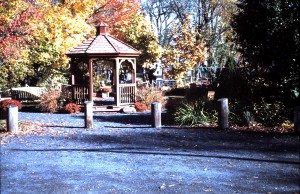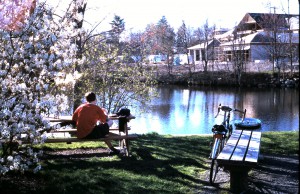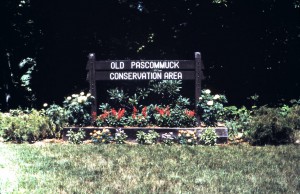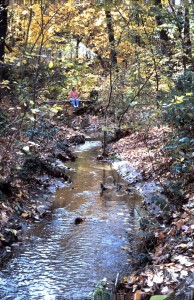Description:
This 16.3 acre property lies on the western edge of Easthampton, with the south branch of the Manhan River forming its western boundary. The majority of the property is wetland, but there is an upland component too.
The Red Maple Forest is the largest community. It includes a section of shrub wetland in the southern half, which is made up of impenetrable silky dogwood and multiflora rose with some Morrow’s honeysuckle as well. A floodplain red maple forest on the northern section is mostly red maple in the canopy with a little elm and ash. There are lots of multiflora rose in the understory. This community also includes a narrow strip along the west boundary is a mixed hardwood forest with red and black oak, black birch and maple. Some streams enter into this portion from the east, coming down some steep and muddy ravines.
On an elevated bench at the north end is a White Pine Forest. This stand is a good habitat for roosting or nesting owls, hawks, or crows. The shrub layer in it is sparse, but contains lowbush blueberry, arrowwood, burning bush, glossy buckthorn, and Japanese barberry. These last three species are all invasive and likely colonized here following this stand’s history as a pasture, which is evidenced by some sprawling juniper bushes. In the ground layer are lots of seedlings of bittersweet along with such common plants as Christmas fern, Canada mayflower, intermediate wood fern, and princess pine.
The third community is a vernal pool almost completely filled with buttonbush.
The fourth community is a shallow marsh that is a beaver-flooded wetland with somewhat more diversity. In addition to buttonbush it also contains cut-grass, halberd-leaf tearthumb, dodder, and spotted touch-me-not. There is a small area of open water in the center.
The Manhan River itself is 20-25 ft wide, 1-3 ft deep, has a silty, sandy bottom, and mud banks 6-7 ft high. It is mostly unshaded in this section.
Assets:
The best features of this property are its relatively large size and its lack of disturbance by humans (except indirectly by the invasive plants). The conservation status of this property helps retain the integrity of the Manhan River corridor. The Manhan River here is classified as Living Waters Core Habitat and the conservation area itself is included in BioMap Core Habitat. The NHESP database indicates that three rare species have been recorded in the vicinity of this area.
The birds seen here are a mix of forest species, open-shrubby species, and those who utilize the river.
Accessible to the Public: Yes
Click here to view a virtual tour of Pomeroy Meadows.
Access to trails is at the end of Ranch Ave. Refer to maps.



